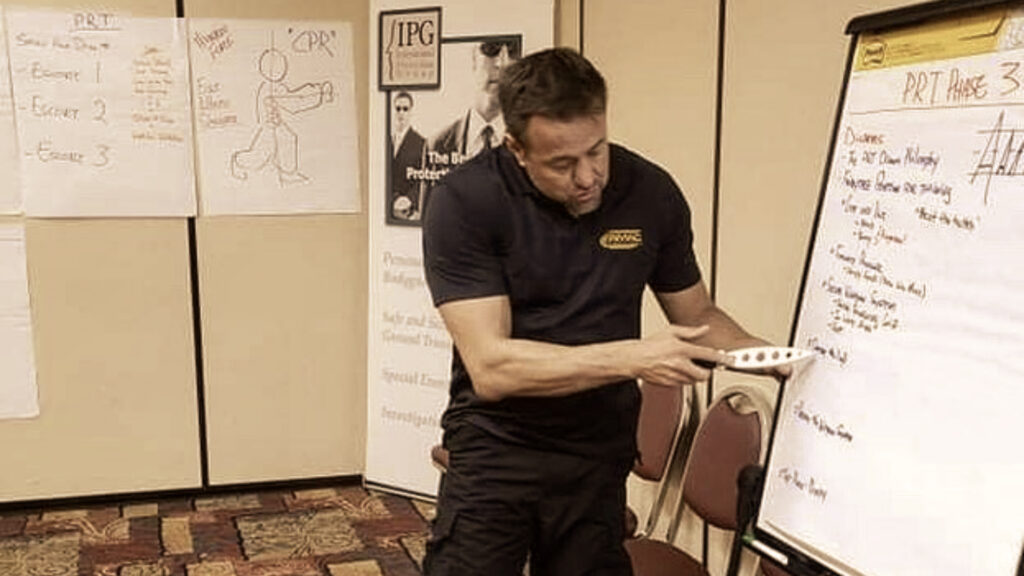
In the world of defensive tactics training, technique-based programs have been prevalent for a long time. However, many customers are unaware that better options are available to them. This article will explore the significance of incorporating thought tools and body state training into defensive tactics programs to improve practitioner skills and enhance overall effectiveness. By understanding the importance of these elements and making informed choices when selecting training programs, individuals can avoid low-value offerings and invest in training that truly prepares them for real-world scenarios.
The Need for Thought Tools and Body State Training
Thought tools and body state training are not easily mastered but can elevate a practitioner’s abilities when applied effectively. Unfortunately, many traditional programs do not include these essential components due to instructors’ lack of knowledge and training or a preference for simpler teaching methods. As customers, it is vital to seek programs encompassing both technique-based training and the development of these mental (thought tool) and physical attributes.
The Role of a Skillful Program Designer
To create an effective defensive tactics program, a designer must possess a comprehensive background in a full spectrum of combat disciplines. This should include firearms systems, edged weapon systems, blunt weapon systems, striking, hand fighting, pummeling, takedowns, grappling, and ground fighting, among other essential techniques. A well-rounded program gives students a holistic understanding of self-defense, ensuring they are prepared for diverse threats and situations.
In addition to a diverse martial arts background, a proficient program designer must thoroughly understand firearms training. Firearms are an inescapable reality in defensive tactics, making it imperative for the creator to be well-versed in this domain. Similarly, expertise in edged weapons is equally essential. In my view, an ideal teacher or program designer should boast proficiency in at least two Filipino or Indonesian martial art systems, accompanied by knowledge of a military blade system. This comprehensive grasp of different weapon systems enables the designer to craft a well-rounded and practical training program that equips participants to defend themselves against a range of threats and challenges effectively. By drawing from a wealth of combatives knowledge, the designer elevates the training experience, providing students with invaluable insights and a holistic approach to self-defense.
Beware of “Experience”-Based Events
Some programs prioritize creating an exciting and immersive experience over providing quality training. These “experience”-based events may leave participants feeling satisfied, but in reality, they offer little substance and are often built on flawed information and designs. Customers must distinguish between genuine training and gimmicks, ensuring their investment is truly valuable. Sanrio-based training undeniably holds immense value, provided it rests on a foundation of solid training principles. The essence of this approach lies in embracing non-systemized thought, encouraging practitioners to think outside the confines of rigid systems.
Customizing scenarios to fit the participants’ unique environments is essential, avoiding a one-size-fits-all approach dictated solely by the opinions of a system. However, it’s worth noting that some training programs might misuse Sanrio-based methods as a means to mask their inadequacies and deficiencies. Hence, it becomes crucial to discern authentic and effective Sanrio-based training from superficial attempts designed to compensate for poor program quality.
The Importance of a Diverse Background
One prevalent challenge among defensive tactics program designers lies in their constrained background in martial arts and other related systems. Crafting a truly comprehensive and effective program requires a diverse range of influences to draw upon, which, unfortunately, demands considerable time and effort to obtain. Regrettably, many designers fall short in this aspect, resulting in the development of incomplete and ineffective training programs.
An effective defensive tactics program should encompass an array of techniques, strategies, and principles sourced from various combat disciplines. A well-rounded designer must possess knowledge and experience in a plethora of martial arts systems, including but not limited to firearms systems, edged weapon systems, blunt weapon systems, striking, hand fighting, pummeling, takedowns, grappling, ground fighting (distinct from grappling), and counter-grappling methods. By integrating elements from different disciplines, the designer can create a cohesive and versatile training regimen that addresses a wide range of potential scenarios and real-world encounters.
Moreover, an astute program designer must be open to exploring non-systemized thought and be willing to adapt their training scenarios to the participants’ specific environments and circumstances. This flexible approach ensures that the training remains practical and relevant, catering to each individual’s unique needs and challenges. Rather than adhering rigidly to the dogma of a single system, the designer should prioritize the development of critical thinking skills and problem-solving abilities within the participants.
Choosing the Right Program
When considering a defensive tactics training program, it is essential to research both the training event and the person behind its design. Look for programs that incorporate thought tools and body-state training alongside technique-based instruction. A designer’s background and expertise should encompass multiple combat disciplines to ensure a comprehensive and well-rounded curriculum. Prospective trainees must assess program designers’ backgrounds and qualifications before enrolling in defensive tactics training. Seeking a designer with a well-rounded experience and understanding of multiple systems increases the likelihood of receiving high-quality and effective instruction. A comprehensive program designed by an experienced professional will offer valuable insights, equip participants with practical skills, and foster the confidence needed to handle various real-life situations effectively.
In conclusion, the gravity of defensive tactics training should always be considered, as it serves as a pivotal factor in preparing individuals for life-threatening scenarios. By prioritizing programs that incorporate thought tools and body state training, participants gain a distinct advantage, elevating their capabilities and real-world effectiveness. The selection of a training program should be approached with careful consideration, with a keen focus on the designer’s qualifications and background in a wide array of combat systems. Armed with this discernment, individuals can make informed choices, investing in defensive training that yields tangible results, bolstering their personal safety, and instilling a profound sense of confidence and assurance. With a commitment to comprehensive and skillful training, individuals are better equipped to protect themselves and others, making their communities safer and more secure. Remember, the path to mastery in defensive tactics is not just about the technique but about the application of knowledge, critical thinking, and an adaptable mindset – all of which can be fostered through a thoughtful and well-rounded training program.

Alan Baker, a seasoned professional in the arena of defensive tactics, specializes in creating customized training programs tailored to the unique needs of various organizations, including law enforcement agencies, security firms, protection agents, and military groups. Alan’s approach stands out for its practical techniques, realistic scenario-based training, and a focus on fostering adaptability to real-world situations.
At Baker Defensive Tactics, we pride ourselves on our problem-development process. We understand that the needs of each client are unique, thus requiring a unique solution. Our training process is designed around this understanding, aiming to enhance the skills and readiness of personnel to the highest degree.
What truly sets our company apart is our ability to design tactics that are not only effective but also Visually Appropriate and Socially Acceptable. We realize the importance of a seamless integration of our strategies into our clients’ specific culture and environment, and we strive to deliver exactly that.
Alan’s unmatched expertise lies in orchestrating programs that sync perfectly with the specific requirements of his clients, while still maintaining a high level of practicality. Through our comprehensive training programs, we aim to uplift the proficiency and readiness of your personnel, preparing them to face any unexpected challenges that come their way.
We invite you to experience the power of personalized training with Baker Defensive Tactics, where every aspect of the program is custom-tailored to suit your needs. Join us in taking your defensive tactics training to the next level.
Interested in taking the first step? You can connect with Alan Baker directly through LinkedIn or visit our website at https://bakertacticaldesign.com to learn more about our services. Our unique training approach allows us to elevate your organization’s defensive capabilities. Experience the difference that Baker Defensive Tactics can make today. Please visit our website at https://bakertacticaldesign.com or reach out to him directly

